 We may be nearing the end of the model year, but there’s still time to pick up a 2011 model-year vehicle. With that in mind, I recently got my hands on a 2011 GMC Sierra, and with very few changes expected for the 2012 model year, it’s safe to say that my mostly positive experience will be carried into next year as well. With that in mind, read on for my review of GM’s “Professional Grade” half-ton pickup.
We may be nearing the end of the model year, but there’s still time to pick up a 2011 model-year vehicle. With that in mind, I recently got my hands on a 2011 GMC Sierra, and with very few changes expected for the 2012 model year, it’s safe to say that my mostly positive experience will be carried into next year as well. With that in mind, read on for my review of GM’s “Professional Grade” half-ton pickup.
 For several decades, Ford, Dodge and GM have been battling, all trying to one-up each other on the toughness and power of their trucks. Ford has it’s F-Series trucks, Dodge (now RAM) has its 1500s, and GM has its Chevrolet Silverado and GMC Sierra. With each generation, the manufacturers build in more payload and towing capacity, more powerful engines, more creature comforts and more refinement. The latter two on that list might seem nonsensical, but since more people are (or were, pre-economic fallout) buying trucks for recreation instead of for work, the makers wanted to capitalize on that, with expensive options and enough trim levels to give you a headache.
For several decades, Ford, Dodge and GM have been battling, all trying to one-up each other on the toughness and power of their trucks. Ford has it’s F-Series trucks, Dodge (now RAM) has its 1500s, and GM has its Chevrolet Silverado and GMC Sierra. With each generation, the manufacturers build in more payload and towing capacity, more powerful engines, more creature comforts and more refinement. The latter two on that list might seem nonsensical, but since more people are (or were, pre-economic fallout) buying trucks for recreation instead of for work, the makers wanted to capitalize on that, with expensive options and enough trim levels to give you a headache.
In that evolutionary vein, the progression from a truck I used to own to the subject of this review is astounding. I had a 1997 Chevrolet K1500, but today’s trucks simply blow the old ones out of the water. More power, more capability and better fuel economy are just the starters. Enough waxing nostalgic though, let’s see what the 2011 GMC Sierra SLE is all about!
 While GM’s latest truck platform was introduced in 2006 as a 2007 model, making it the oldest of the three major truck platforms, it’s aged gracefully. Its platform, code-named GMT900, is built solidly, with handsome sheet metal and a well-designed interior.
While GM’s latest truck platform was introduced in 2006 as a 2007 model, making it the oldest of the three major truck platforms, it’s aged gracefully. Its platform, code-named GMT900, is built solidly, with handsome sheet metal and a well-designed interior.
 For just under $41,000, you get the Sierra SLE Crew Cab, with a 5.5′ bed, the Power Tech package, Convenience Package, and the Chrome Essentials package. The Power Tech package is centered around the 5.3-liter V8 and heavy-duty towing equipment, while the Convenience Package adds remote start and dual-zone automatic climate control, among other niceties. The Chrome Essentials gives you chrome bumpers, mirror caps and wheels, which went very well with the Stealth Gray metallic paint on my tester.
For just under $41,000, you get the Sierra SLE Crew Cab, with a 5.5′ bed, the Power Tech package, Convenience Package, and the Chrome Essentials package. The Power Tech package is centered around the 5.3-liter V8 and heavy-duty towing equipment, while the Convenience Package adds remote start and dual-zone automatic climate control, among other niceties. The Chrome Essentials gives you chrome bumpers, mirror caps and wheels, which went very well with the Stealth Gray metallic paint on my tester.
With a base price of just over $35,000 for the SLE trim level and almost $5,000 in options, plus $995 destination, the total MSRP was $40,795. As it sat, my tester represented a good mix of options, with a good dose of useful features but nothing frivolous – a truck suited to both work and play. If I were buying a Sierra, the biggest extras I’d tack on would be the Bose stereo and moonroof.
 Truck exteriors have evolved since the mid-1990’s, from boxy to round, and now back to squared off, blocky designs. While the Chevrolet Silverado and GMC Sierra share a lot of body panels, the Sierra seems to somehow have a more refined and cohesive look to it. The raked windshield and rounded-off fender flares hide some of the bulk of the truck, and the head-turns I got while driving it in the DC Metro area confirmed its attractiveness.
Truck exteriors have evolved since the mid-1990’s, from boxy to round, and now back to squared off, blocky designs. While the Chevrolet Silverado and GMC Sierra share a lot of body panels, the Sierra seems to somehow have a more refined and cohesive look to it. The raked windshield and rounded-off fender flares hide some of the bulk of the truck, and the head-turns I got while driving it in the DC Metro area confirmed its attractiveness.
 Moving into the cab, the driver’s seating position is commanding, with all of the controls close at hand. Climate controls are smartly disconnected from the audio system, unlike a lot of vehicles I’ve been in recently. The steering wheel controls are sized right for bare or gloved hands, and even weeks after driving the Sierra, I’m still talking about the steering wheel-mounted audio controls. They are in such a perfect position that when your right elbow is resting on the center console as you drive, the tips of your fingers can reach up and adjust the audio settings without having to move at all! I give GM a thumbs-up for this design, as the audio controls are second only to the turn signal stalk in my frequency-of-use.
Moving into the cab, the driver’s seating position is commanding, with all of the controls close at hand. Climate controls are smartly disconnected from the audio system, unlike a lot of vehicles I’ve been in recently. The steering wheel controls are sized right for bare or gloved hands, and even weeks after driving the Sierra, I’m still talking about the steering wheel-mounted audio controls. They are in such a perfect position that when your right elbow is resting on the center console as you drive, the tips of your fingers can reach up and adjust the audio settings without having to move at all! I give GM a thumbs-up for this design, as the audio controls are second only to the turn signal stalk in my frequency-of-use.
 GM also gets an attaboy for allowing presets to mix bands. You get 36 presets, in blocks of six, but instead of the usual band-centric preset blocks, you can have one block of six presets with stations on AM, FM and XM. If you only have a couple of favorite stations from each band, you no longer have to scroll through your preset blocks to get to a specific station – just mix it in with your other favorites.
GM also gets an attaboy for allowing presets to mix bands. You get 36 presets, in blocks of six, but instead of the usual band-centric preset blocks, you can have one block of six presets with stations on AM, FM and XM. If you only have a couple of favorite stations from each band, you no longer have to scroll through your preset blocks to get to a specific station – just mix it in with your other favorites.
Now for the not-so-good news. While GM offers Bluetooth technology in the Sierra, it’s a bit kludgy in use. Pairing my iPhone with the Sierra wasn’t too difficult, once I’d watched a video on it, but trying to make phone calls was distracting, to say the least. Incoming calls, on the other hand, were easy to answer, and callers said the audio quality was very clear.
 Looking around the cab of the truck, the surfaces were plastic, as expected, but instead of a cheap or low-rent feeling, the Sierra uses some very nice materials. A lot of automakers are using continuously less-expensive plastics in their newer vehicles, but GM opted to go the other way. It’s a very nice touch, and makes it easier to swallow the $40k-plus you’ll be asked to spend on a well-equipped truck these days.
Looking around the cab of the truck, the surfaces were plastic, as expected, but instead of a cheap or low-rent feeling, the Sierra uses some very nice materials. A lot of automakers are using continuously less-expensive plastics in their newer vehicles, but GM opted to go the other way. It’s a very nice touch, and makes it easier to swallow the $40k-plus you’ll be asked to spend on a well-equipped truck these days.
 The seats in the Sierra are quite comfortable, with plenty of cushion. At 5’8″, I found it easy to find a good seating position in the six-way adjustable leather seats. If the SLE’s seats don’t fit you, there are 10-way adjustable seats found in other option packages and trim levels. For passengers, since my tester was a crew cab, the back seat had plenty of room – at least as much as the front seats, if not more. The only issue with the Sierra’s back seat is the transmission tunnel, which intrudes into the center of the rear area. This prevents the truck from having a completely flat load floor, which GM most likely did to keep the overall height of the truck down. While this helps with ingress and egress, I’d rather be able to keep larger items protected from the elements.
The seats in the Sierra are quite comfortable, with plenty of cushion. At 5’8″, I found it easy to find a good seating position in the six-way adjustable leather seats. If the SLE’s seats don’t fit you, there are 10-way adjustable seats found in other option packages and trim levels. For passengers, since my tester was a crew cab, the back seat had plenty of room – at least as much as the front seats, if not more. The only issue with the Sierra’s back seat is the transmission tunnel, which intrudes into the center of the rear area. This prevents the truck from having a completely flat load floor, which GM most likely did to keep the overall height of the truck down. While this helps with ingress and egress, I’d rather be able to keep larger items protected from the elements.
Once on the road, you’ll find a fairly-well composed ride, albeit with hints of wiggle and tire slap when traversing less-than-perfect road surfaces. Aside from this one hickup, the Sierra drove well. Steering feel is commendable for such a large vehicle, as are the brakes on the Sierra.
This leaves the acceleration from the 5.3-liter V8 found in the Power Tech package. While adequate, the engine left me wanting for more power. The EPA certified the GMC Sierra at 15 city and 20 highway when equipped with the aforementioned V8, which is the mid-range engine in the Sierra lineup. The transmission and throttle programming GM used to gain those good-for-a-truck fuel economy numbers meant that keeping up with traffic was just fine, but anything resembling a hurry took a deep stab at the gas pedal to be completed. In addition to computer programming, GM’s 5.3-liter V8 has a cylinder deactivation feature called “MDS,” which is GM-speak for Multiple Displacement System. In layman’s terms, the V8 runs on only four cylinders, effectively running as a four-cylinder engine. This happens when only light gas pedal pressure is used, meaning a leisurely pace or flat highways are about the only circumstances where you’ll see the feature’s effect on your MPGs. The information display in the instrument cluster has an instantaneous MPG readout, which also displays the number of cylinders the V8 is using – useful for efficiency-conscious drivers.
In all, the GMC Sierra provides a lot of utility for those willing to trade a little bit of ride comfort and fuel economy. If you’re going to be hauling stuff more than people, opt for an extended cab with a 6.5′ bed. While the 6.5′ bed can be had with the crew cab, it makes for an even longer truck, which can be hard to fit into regularly-sized parking spots. On the other hand, if people and comfort are your priorities, with infrequent hauling or towing required, get the crew cab SLT model, which more closely resembles the currently-available family sedans on the market, and includes a fair amount of luxury features as well. Either way, you’ll be a happy truck driver. Trucks have come a long way in the last ten to fifteen years, adding creature comforts, ride and handling Americans are used to seeing in the mid-sized sedan segment. From base work trucks to luxotrucks, the Sierra provides a trim and package level for just about anyone in the market for a new truck.
Competitors: Acura TL, Acura TSX, BMW 3-Series, Buick LaCrosse, Chevrolet Malibu, Ford Fusion, Honda Accord, Hyundai Azera, Hyundai Sonata, Infiniti G37 Sedan, Mazda Mazda6, Saab 9-3, Subaru Legacy, Volkswagen Passat, Volvo S60
As-Tested:
Year: 2011
Make: GMC
Model: Sierra SLE
EPA Fuel Mileage: 15/20 City/Highway
Base Price: $35,955
Options:
$2,820: Power Tech Package (discounted to $1,500; includes 5.3-liter V8, Bluetooth, 6-way driver’s seat, dual-zone automatic climate control, max trailering, etc.)
$1,450: Chrome Essentials Package (includes 18″ chrome wheels, polished exhaust tip, chrome mirror caps, chrome door handles)
Total: $38,725
Destination: $995
As-Tested Price: $39,720
by John Suit
Thanks to Steve Fransisco of King Buick GMC for providing the test vehicle.

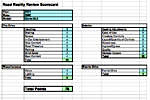
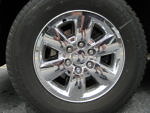
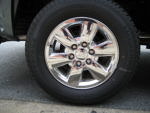
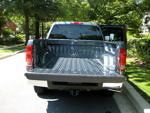
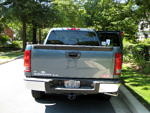
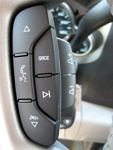
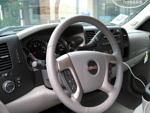
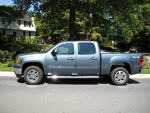

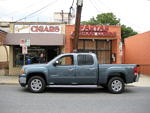
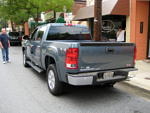
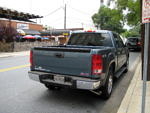
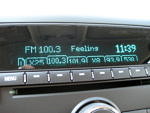
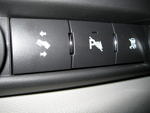
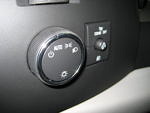
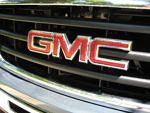
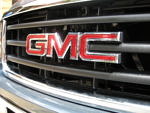
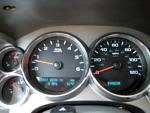
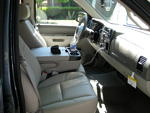
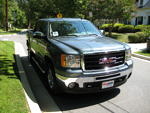
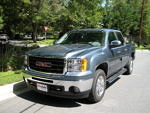
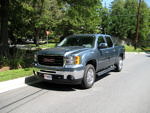
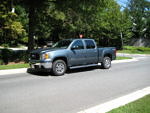
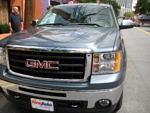
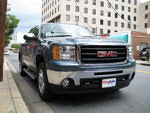
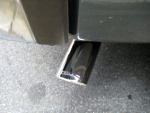
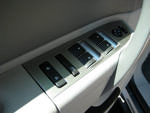
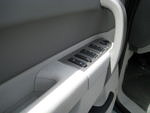
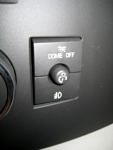
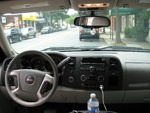
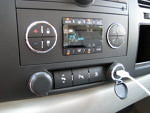
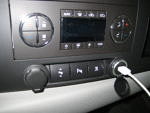
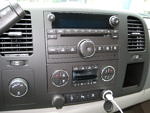
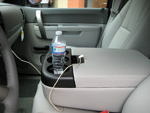
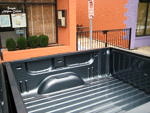
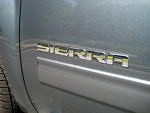
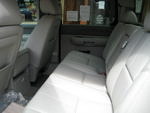
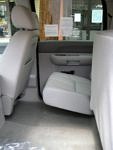
I just bought a 2011 Sierra SLE crew cab and had been wondering what was included in GM’s “Power Tech” package. You’re review explained it well. Thank you.